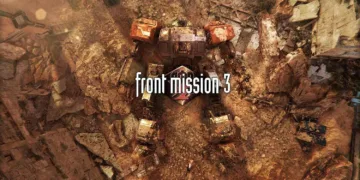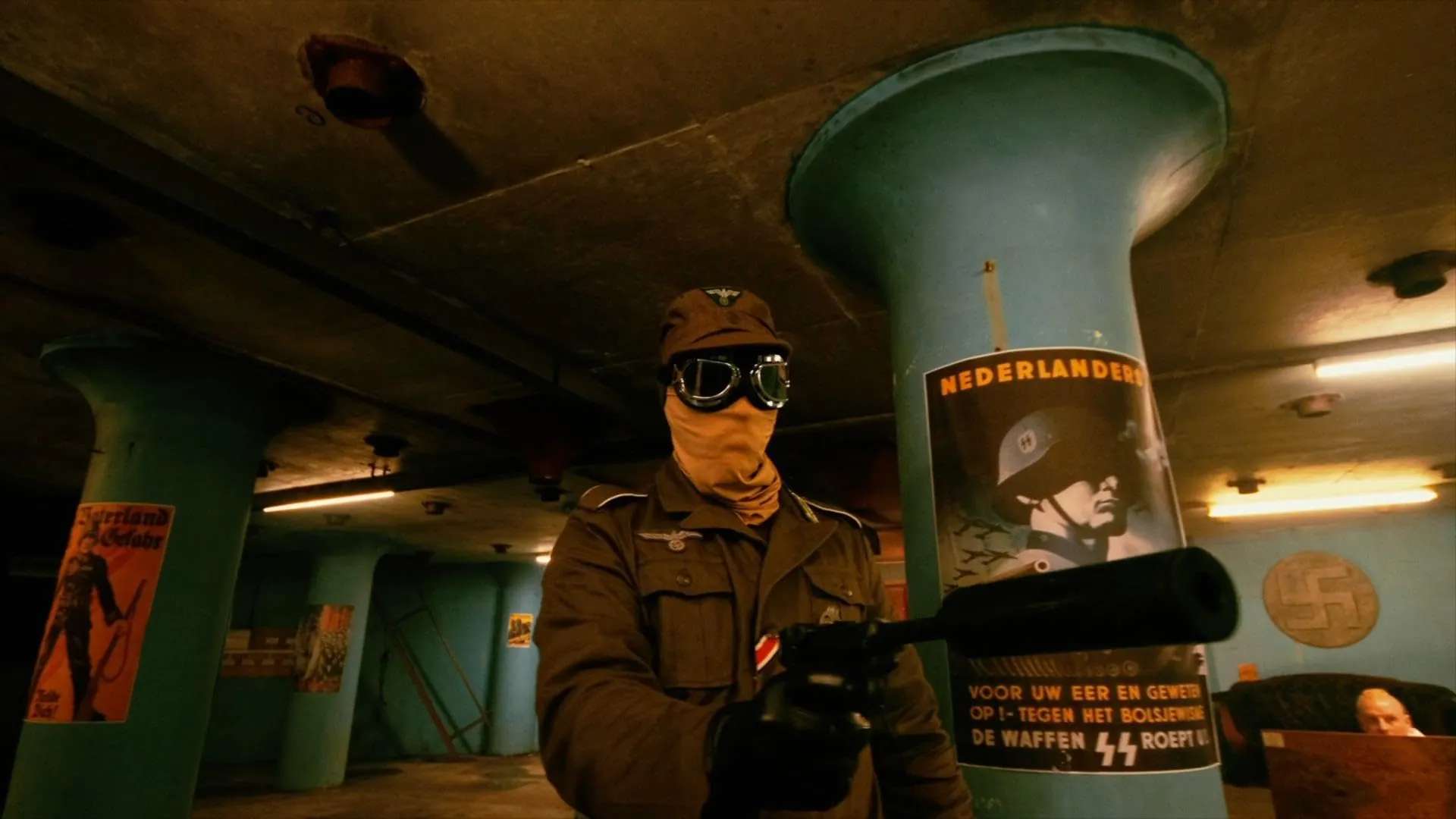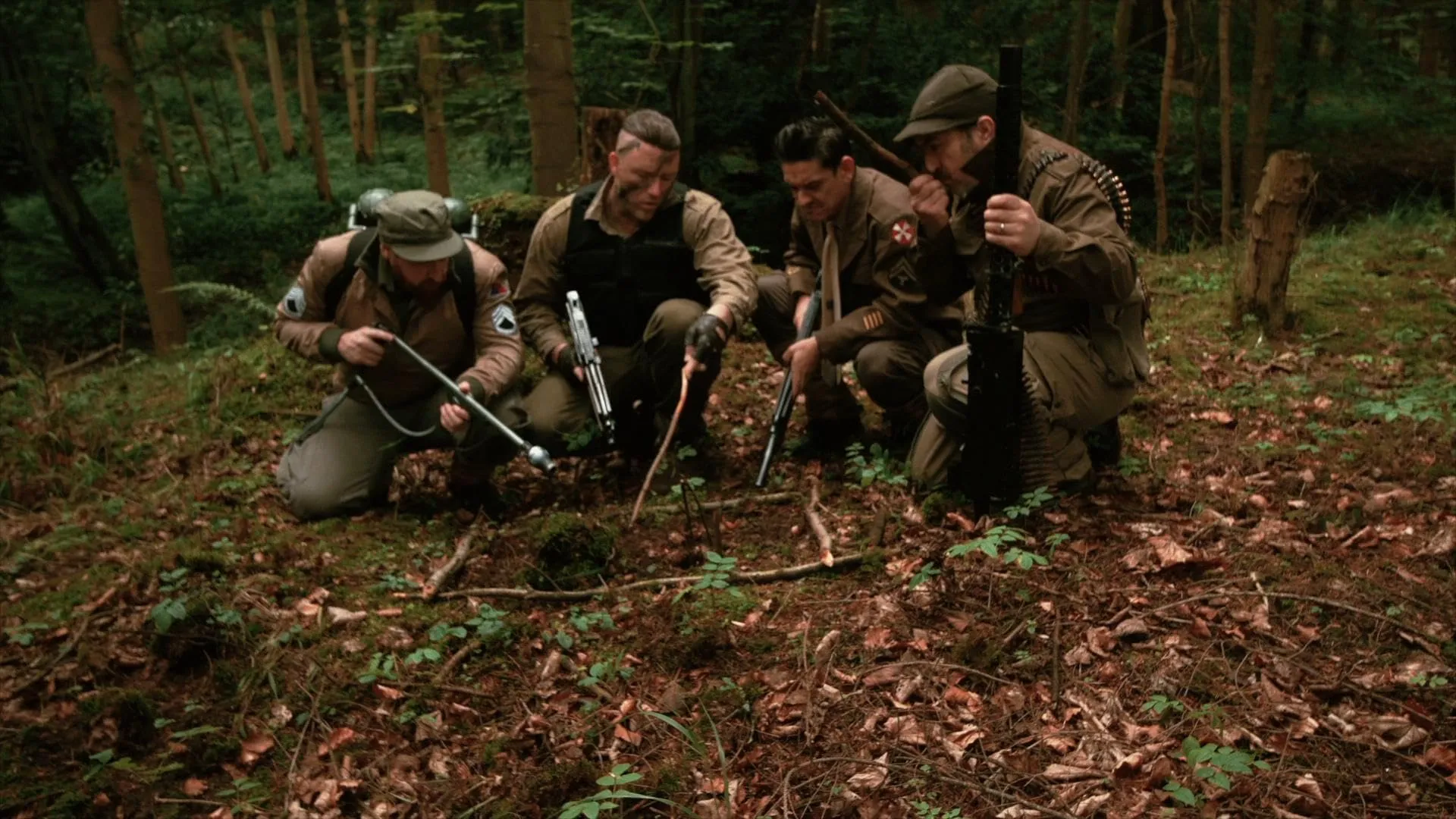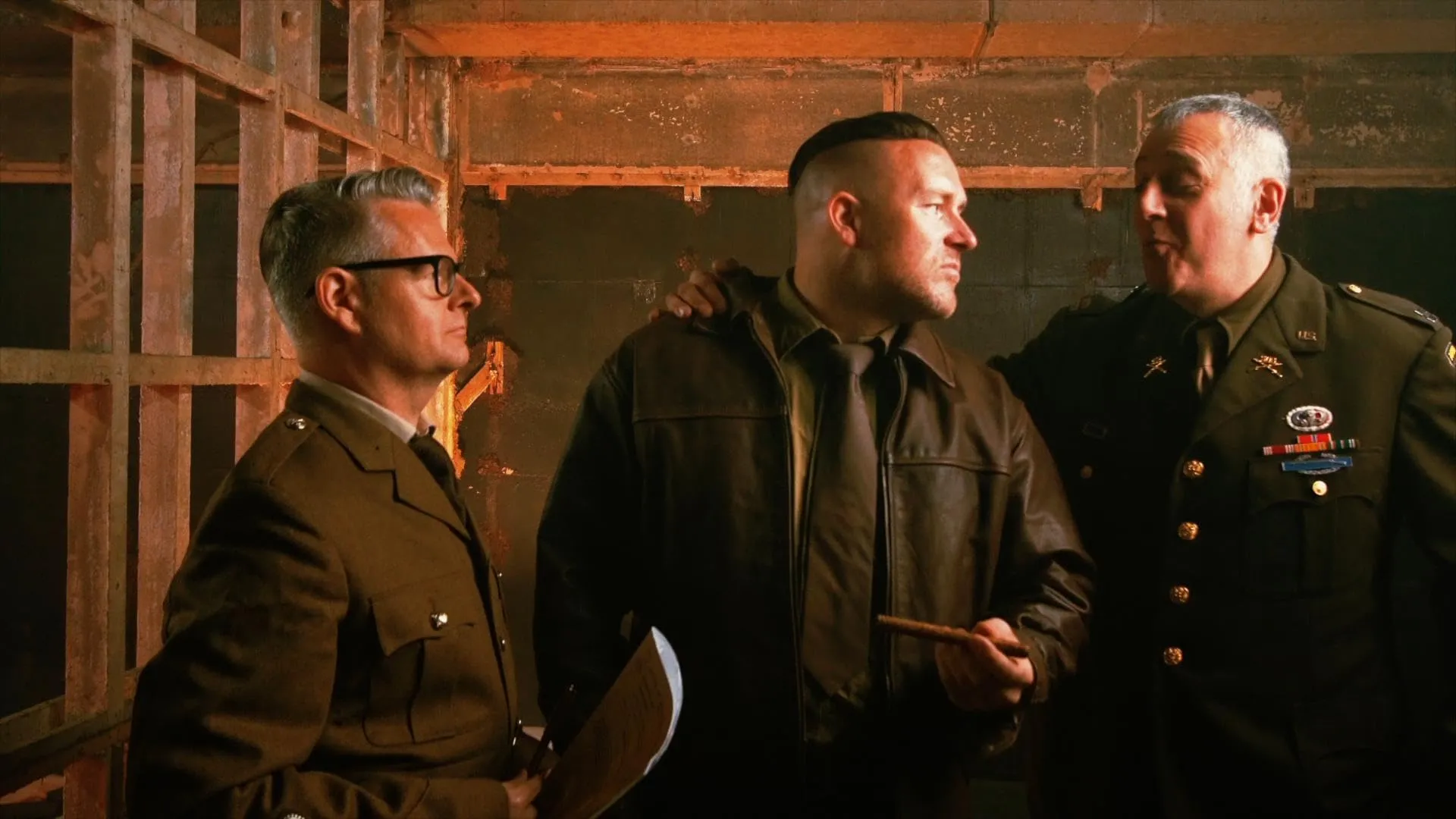Dick Dynamite: 1944 emerges as a wild burst of chaos, an independent film that spoofs and dissects the exaggerated action films of the 1980s while blending with the brutality and absurdity of war-era exploitation movies.
Set in the final moments of WWII, the film tracks its main character, Dick Dynamite, as he guides a scrappy group of fighters to prevent Nazi scientists from unleashing a zombie-driven apocalypse on New York City.
The plot remains straightforward—Nazi villains with a sinister scheme, a cigar-chomping, muscular hero, and an unending stream of violent sequences. It seems more suited to a midnight grindhouse screening than a mainstream theater, but this becomes its distinct appeal: Dick Dynamite: 1944 embraces a forgotten cinematic period with wild energy.
The film serves as a brash challenge to the idea of restraint. Its budget constraints show through crude special effects and rough visual techniques—sometimes the production quality matches a street fight’s rawness. This unpolished quality propels the film into a deeper cultural space.
The stark contrast between outrageous gore and humor—seemingly born from post-WWII anxieties about uncontrolled militarism—reflects the spirit of 1970s exploitation cinema. Through seemingly mindless entertainment, the film subtly invites viewers to examine violence’s cyclical nature and its strange emotional release amid persistent global conflicts.
The Larger-Than-Life Ensemble: A Study in Absurd Heroes and Villains
Dick Dynamite represents a larger-than-life action hero, transcending the typical 1980s protagonist. He embodies an archetype stretched to such comic extremes that he comments on the genre he parodies.
The character displays masculinity like armor—massive muscles, a thick cigar, and pun-laden quips reminiscent of Arnold Schwarzenegger’s style, but with heightened self-awareness. Dynamite emerges from an imaginary world where John Wayne and the Terminator intersect, with intellectual depth comparable to a stone.
His relentless Nazi-hunting, driven by raw aggression and unexamined testosterone, reveals deeper questions about war’s glorification in popular culture—a spectacle both electrifying and emotionally empty.
Supporting characters match his absurdity, especially Dash Dalton, the British secret agent who personifies post-colonial swagger. His roguish demeanor drips with exaggerated superiority, representing the final whisper of British imperial mentality.
Max Schtacker, the villain, epitomizes cartoonish evil—a walking SS uniform who eliminates obstacles with maniacal glee. He creates a stark contrast with Dynamite, two hyperbolized characters representing opposite sides of a warped ethical spectrum.
The film includes scattered cameos from Clive Russell, Dick Valentine, and others—each appearance another layer of ridiculous performance. Dick Dynamite celebrates unbridled cinematic chaos, challenging traditional storytelling while examining war, violence, and human complexity through gleeful excess.
The Plot as Weapon: Simple Yet Subversive
Dick Dynamite: 1944 unfolds a raw narrative: Nazi villains plot to transform New York’s population into flesh-eating zombies using a deadly gas.
Dick Dynamite—a cigar-chomping, muscle-bound hero with endless quips—leads a group of eccentric fighters to stop this apocalyptic threat. The story charges forward like a battering ram, crushing any hope of subtlety while embracing violent action and dark comedy.
The film’s stripped-down approach challenges traditional storytelling. Without intricate backstories or complex subplots, it presents a stark confrontation between good and evil. Outrageous stakes replace nuanced character development. The movie strips cinema down to its most basic elements—explosive action, ridiculous dialogue, and unrestrained chaos.
This cinematic approach sparks questions about entertainment and storytelling. While contemporary films often explore moral complexities, Dick Dynamite: 1944 rejects such intellectual pretensions.
The movie celebrates raw, unfiltered spectacle—a middle finger to sophisticated narrative structures. It suggests that sometimes, pure entertainment trumps deep meaning, inviting audiences to abandon critical thinking and simply experience unbridled cinematic madness.
Absurdity as Art: The Symbiosis of Humor, Violence, and Tone
Dick Dynamite: 1944 thrives in absurdity. Its tone deliberately mocks itself—part parody, part celebration of an era where violence and one-liners defined coolness. The film never pretends to be serious, yet paradoxically takes its ridiculousness seriously.
Filmmakers embraced their low-budget constraints, transforming limitations into artistic choice. Violent sequences explode with cartoonish energy, characters burst with impossible personalities, and scenarios defy logic. Nazi zombies and a trigger-happy hero replace gritty realism.
Humor serves as the film’s primary weapon. Exaggerated characters create a world of farce where impossible scenarios feel strangely logical. Max Schtacker embodies villainy so extreme he becomes a walking punchline. Dick Dynamite’s quips echo classic action hero dialogue—brutal, direct, packed with unexpected charm. Each line strikes like a verbal punch.
Graphic violence matches the film’s outrageous spirit. Practical effects blend with digital carnage, creating a wild visual landscape. Kills become performance art—each decapitated Nazi or exploding head a twisted comic moment. Practical gore and digital blood dance together, celebrating cinematic excess.
The film’s irreverent humor carries deeper undertones. References to historical events skewer traditional action movie tropes. By transforming Nazi villains into cartoon characters, the movie explores how cinema processes historical trauma through ridiculous spectacle. Dark comedy becomes a mechanism for confronting uncomfortable cultural memories.
The Beauty of Imperfection: A Deep Dive into Production and Craft
Dick Dynamite: 1944 emerges from a filmmaker’s creative constraints and limited resources. Visual quality reflects this scrappy approach. Digital effects waver between comically awful and ingeniously creative, as if the team understood their limitations and chose to celebrate them.
CGI blood and explosions never aim to deceive viewers about the production’s scale. Instead, they become part of a deliberate strategy—crude, charming, and simple. The production itself mirrors the genre: rough, imperfect, yet bursting with raw energy.
The handmade aesthetic extends beyond visual effects. Costumes and props carry the marks of limited budgets while maintaining surprising historical accuracy. Nazi uniforms, wartime gear, and eccentric character costumes feel like intentional artistic choices.
The design resembles a stage production more than a big-budget war film, where imagination bridges technical gaps. Period vehicles appear sparingly but with deep reverence for the WWII genre. An old-school energy permeates every frame, unapologetic about its manufactured nature.
Sound design matches the visual approach. Audio feels inconsistent yet strangely compelling. Dialogue gets swallowed by explosion soundscapes, creating an unusual atmospheric texture.
The film exists between polished cinema and B-movie madness—a loud, slightly off-key experience packed with unintentional charm. Audio imperfections become part of the storytelling, like a reckless musical performance that captures attention through sheer audacity.
Embracing the Chaos: Dick Dynamite and Its Unlikely Legacy
Dick Dynamite: 1944 stands defiant—a raw explosion of B-movie madness that makes no apologies. The film breathes pure entertainment, a cinematic punch that celebrates outrageous action without restraint.
Like a Saturday morning cartoon soaked in blood, it delivers violent spectacles and cringe-worthy one-liners that somehow work perfectly. Fans of unhinged action will find pure joy in this experience. The movie resurrects an era when films embraced pure, unapologetic ridiculousness—where Nazi-killing becomes an art form of spectacular excess.
The film captures something deeper within audience fantasies. Its chaotic energy taps into a primal desire for pure, unfiltered escapism. Nazis explode in creative ways, characters chew scenery with gleeful abandon, and logic takes a permanent vacation.
Dick Dynamite represents a wild ride through cinematic excess—a world where subtlety means failure and over-the-top means success. Each scene screams with raw, uncontrolled energy, inviting viewers to abandon serious thought and simply experience unbridled entertainment.
The movie’s open-ended structure whispers of potential future adventures. Dick Dynamite could return, ready to unleash more carnage, more ridiculous dialogue, more blood-soaked mayhem. This isn’t just a film—it’s a celebration of pure, unrestrained cinematic chaos.
The Review
Dick Dynamite 1944
Dick Dynamite: 1944 is an unrelenting, absurd ride through B-movie chaos—an explosive tribute to 80s action tropes and grindhouse films. It’s loud, violent, and drenched in camp, offering little in the way of subtlety but plenty of enjoyment for fans of over-the-top action and unapologetic humor. While it revels in its low-budget nature, the film’s chaotic spirit and commitment to fun make it a standout in the realm of cult action comedies.
PROS
- Unapologetically fun and over-the-top
- Deliberately campy with a playful tone
CONS
- Low-budget effects can be distracting
- Audio inconsistencies and poor dubbing




















































